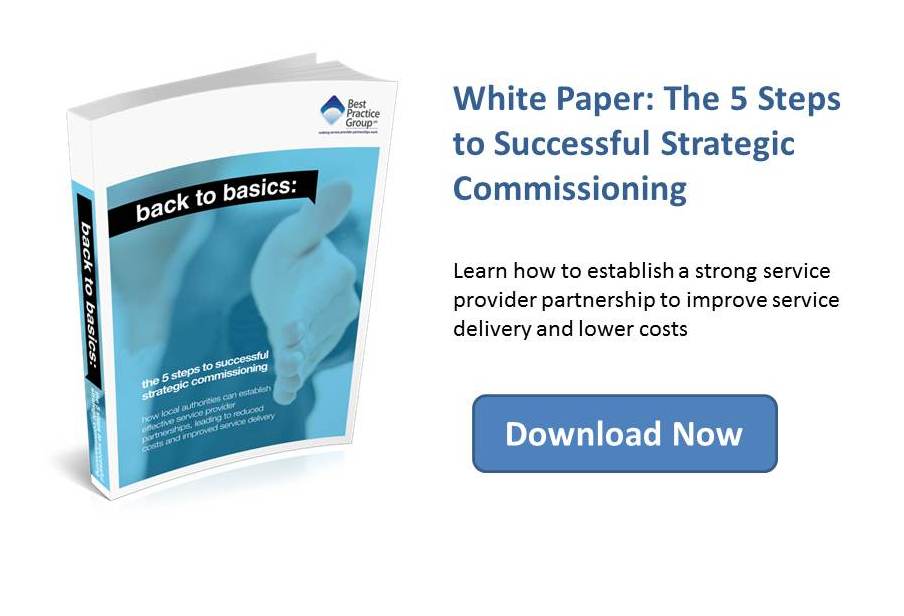Not every project can be handled in-house. There will be times when the resources, skill-sets and specific expertise of strategic suppliers will be needed and your business case will help you come to that conclusion. Once you have come to the conclusion that outside help is required to deliver your project, then how you go about successfully procuring and contracting for it becomes all-important. How you approach this will go a long way to determining whether your project achieves its business case expectations.
Because it is so important to have a robust process in place to achieve your business case objectives when working with external experts, we have put together eight fundamental tips for you to weave into your procurement process:
1 – Your right to expert advice
One of the primary differences between taking on the project yourself and allowing an external partner to either run with or support you in your endeavours is responsibility and accountability. Where you rely on the expert knowledge of a partner they generally have an underpinning duty to be your eyes and ears and to warn you not only of what you will get, but also of gaps and omissions and their consequential impact. This is important because you are relying on their lessons learnt from many other projects to advise you about how to get to the best outcomes in the quickest, most cost-effective way. Prevention obviates cure. So it is time well invested to build awareness and a context of respective responsibilities into conversations and contracts at the outset of the provider procurement process. You will find that this drives the right behaviours and will give you additional confidence that your partner is doing all they can to protect your interests. Of course, if you handle the project entirely in-house then all the responsibility and accountability remains with you.
2 – Stakeholder buy-in and in-house preparedness
The more you can do in-house to gather information, develop objectives-based output and outcome specifications, evaluate criteria, scenario test, document and support the project, the fewer provider resources will need to be paid for and the more involved stakeholders will feel. Key stakeholders must be identified and a strategy developed for winning their support over time. It is also essential at this stage to ensure that you have the manpower, skills and resources to create an effective Intelligent Client Function (ICF) team, as they will guide the project, build provider relationships and trust, and be your early warning system should things start to go wrong.
3 – Communicate your objectives
It is important that your instructions to providers during the procurement process should be focused purely on the overarching objectives and outcomes you wish to achieve – not being prescriptive of how you expect them to get there. While it is often tempting to dictate in detail exactly how you want your provider to do things, this should be resisted. Being prescriptive by using input specifications means you take on responsibility for the solution, and if things go wrong in the project your provider will likely claim that your specification is what caused it to fail. If you describe the business problem and then ask the market to propose the best cure, then the responsibility sits squarely with the provider.
4 – Negotiate firmly but fairly
Make the most of your access to the expertise of multiple providers during a competitive procurement exercise. Do not make too snap a decision on ‘the winner’. It is useful to maintain an element of competition, and this also encourages more openness and willingness to offer guidance that could take a project in a more profitable direction. Also, it’s worth noting that getting the best ‘deal’ (i.e. the cheapest price) is not always a good thing. While it can be considered a short-term win, a provider that feels it is not being paid what they are worth will not feel incentivised to innovate or even in some cases, to meet expectations. Be firm but fair and always evaluate costs and benefits in the context of the business case to be sure you have found the long-term best solution and provider.
5 – Terms of Reference
To cement your provider’s role as ‘expert’ on the project, and to ensure that the project roles and responsibilities are well defined, it is useful to create a terms of reference to govern a thorough scoping due diligence exercise. When done well, this will reliably ensure much better focus both on your project objectives and the provider’s ability to develop, provide and implement a solution that will achieve your expectations.
6 – Response Template
It is essential that you have as clear and complete a response from all of your prospective suppliers/providers as possible to determine which is best placed to support you in your project goals. A well-formed response template, aligned with the strong Terms of Reference, will give you visibility of all the key aspects of the project and allow a structured appraisal of the strengths and weaknesses of each bid. In due course, this response template will form your contract, so it’s important to get right. The best response templates will capture information such as reliable timelines and accurate costings; roles, responsibilities and resourcing requirements; implementation plans, methodology and management; risks, issues assumptions and dependencies; governance structures and communications plans. A standardised response template helps to ensure that you are evaluating bids on a like-for-like basis and will expedite review timescales as you know where to look in each response for the same aspects of information. It is also invaluable during the implementation phase to check back on what it was that both parties agreed to do. This cuts out a lot of uncertainty and argument.
7 – Analysis against the business case
The above tips help to ensure you have clarity of the solution, its true costs and benefits before committing to what can be a multi-million pound investment. This knowledge is invaluable to validate whether all or any of the remaining bidders in the procurement process meet your expectations and your business case. If all looks sunny, then some clients do a final check by doubling the costs and halving the benefits – if having done so and the business case still remains valid it is clearly a very good indicator that the investment you are about to make holds water.
8 – Benefits realisation strategy
As well as keeping the business case up to date with changing information, it is important to measure performance against the business case. This is ideally via a ‘Benefits Realisation’ strategy, and this can be all too often forgotten about. It is, however, essential if you want to objectively evaluate whether the project has been successful. Unfortunately, particularly with major IT-based projects, success becomes equated with ‘go-live’. However, if you do not review and quantify benefits achieved throughout and beyond the end of a project how can you truly know that your business case has been achieved? This requires planning (to determine how and when benefits should be measured) and management (an individual with the responsibility to guide a team each with their own task of identifying when business case benefits have been achieved and calculating the actual benefits realised).
Conclusion
The potential for success or failure in major business-critical projects starts long before you select a provider to partner with, and determining whether your project was successful or not goes on long after the solution has been implemented. Each stage along the way must be offered the respect and attention it deserves, and determining the quantified and qualified objectives and benefits of your project, formulating a precise business case document, and ensuring that you have the resources to manage, monitor, maintain and report on progress against such a business case, is one of the most vital tools in your business armoury.
Photo credit: iStock, Choreograph



